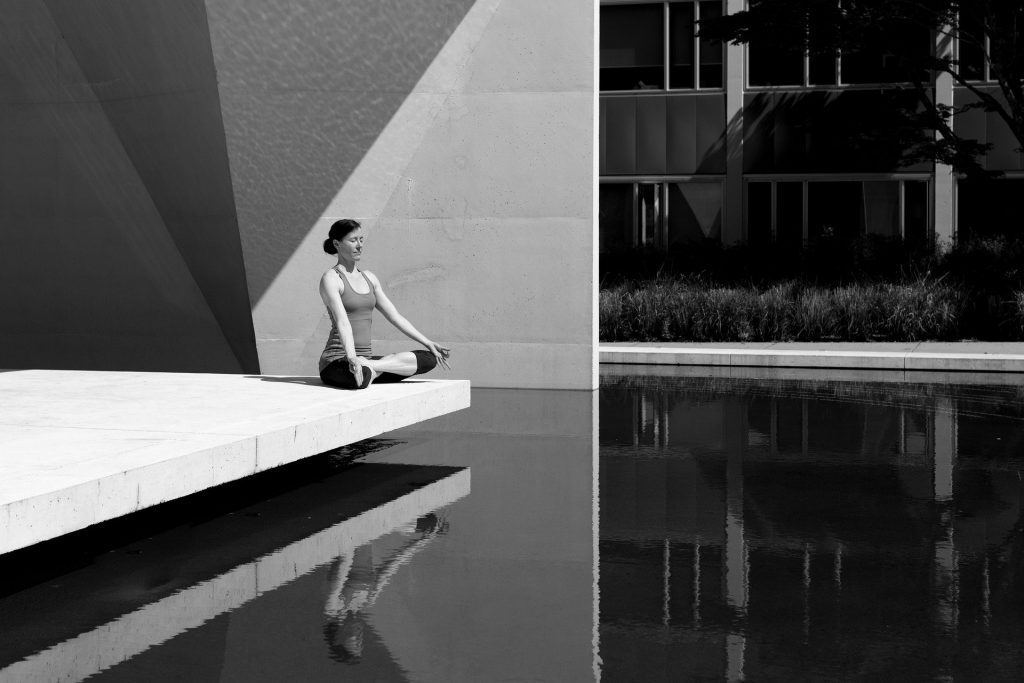Meditation and Mindfulness for Anxiety and Stress

With a large part of the world focusing on social distancing, it’s worth seeing what we can do on our own to help deal with stress and anxiety. Along with standard approaches, techniques like meditation and mindfulness are readily available and appear to hold promise in helping people relax and process stress. Personally, I have used meditation as a technique to help with my own stress and anxiety for many years.
Meditation
Meditation is a technique that involves focusing on something continuously. Most people think meditation is about emptying the mind. In reality, focusing on nothing or emptiness is really quite challenging. For most people, it’s easier to start with a simpler point of focus.
There are numerous things you can use as a point of focus for meditation. Some of the more common include focusing on:
- your breath
- a prayer, mantra or positive statement that you repeat
- a physical sensation
- a physical location in your body, for example your heart
- an emotional process, like gratitude
- a guided meditation, where someone talks you through an experience
- something outside your body, like a candle or some other object in front of you
When practicing meditation, your mind will often wander. That is completely normal. When it wanders, you just bring it back to your main point of focus.
Mindfulness Meditation
Mindfulness is a meditation technique where you focus on your present state of mind and/or body with an open acceptance of the experience. It’s important when practicing mindfulness not to judge your experiences. Our mind is usually very quick to label an experience as good or bad, yet with mindfulness, you focus on the experience itself without imposing judgment.
When practicing mindfulness, it’s also important to focus on what you are experiencing here and now. Mindfulness is about your current experience, not focusing on past or future events. Like any meditation, it’s very common for the mind to wander while practicing mindfulness. When this happens, you can still be mindful of your wandering mind and bring it back to the present focus.
You can use mindfulness while you eat, while sitting still and breathing, even while walking. Mindfulness can enhance many activities, even such mundane tasks as washing the dishes.
Research on Meditation and Mindfulness
Research suggests that meditation and mindfulness have their place for helping with improving mental emotional states. A recent review showed that mindfulness techniques worked as well as some counseling techniques (cognitive behavioral therapy) for both anxiety and depression (Hofmann 2017).
For depression, a recent review concluded that mindfulness based meditation was effective on its own or in combination with other treatments. Benefits lasted six months or more. For anxiety, the data isn’t as robust, but still appears beneficial in combination with other treatments (Saeed 2019).
For people who are interested, there are lots of resources online to start exploring meditation and mindfulness. Just make sure you find resources from a reputable source:
- University of California San Diego mindfulness resource list
- Stanford University mindfulness resource list
- University of California Los Angeles mindfulness resource list
Conclusion
With everyone likely experiencing heightened levels of stress and anxiety, it’s best to find effective coping strategies. Meditation and mindfulness techniques have been around for thousands of years and research is validating their benefits. These techniques are typically free or guided experiences are available online at low cost. Exploring meditation can be an additional valuable tool to help deal with our current levels of anxiety and stress.




whoah this blog is wonderful i really like reading your articles. Keep it up! You realize, a lot of people are hunting round for this info, you could help them greatly.